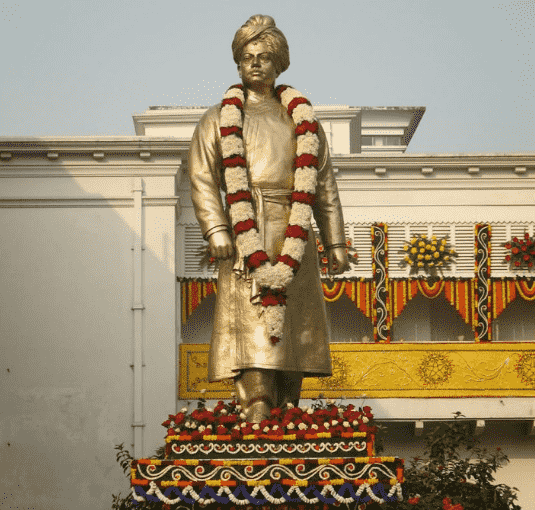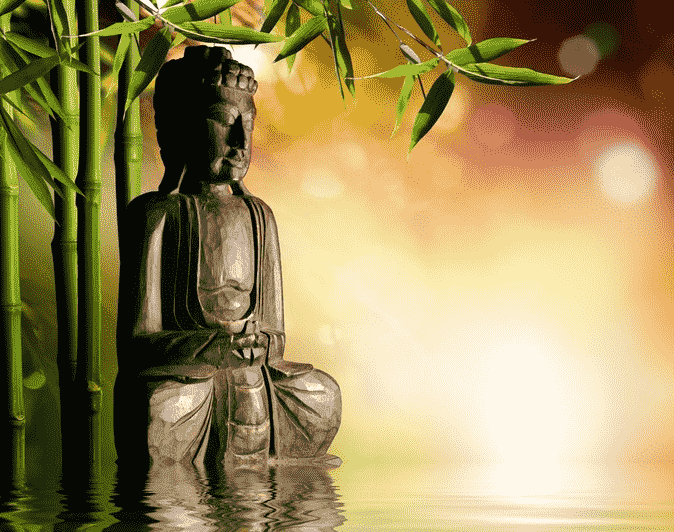The World’s Parliament of Religions, an assembly of adherents of many religious traditions, which took place in Chicago in 1893, served as the first official platform for the American people to learn about Hinduism. At that time, Hindus, Buddhists, and other adherents of “Eastern” religions were first visible and audible to the general public in the United States. At the time, academics in Europe and America were beginning to acknowledge other significant religions worldwide. Despite not being seen as excellent as Christianity, they were included in the list of an expanding collection of “global religions.” Unfortunately, no one was invited affiliated with any indigenous faiths or Native American customs. Let’s see some reasons behind Americans practicing Hinduism or Buddhism.
Role of Swami Vivekananda in Propagation of Hinduism

Young monk Vivekananda, who represented Hinduism, is renowned for addressing his audience as “brothers and sisters of America” at the outset of his lecture. When communities were separated and racial supremacy was viewed, it was rare for an Indian monk to embrace the audience as a single family. Standing ovations were given to Vivekananda. He was still appreciated after the presentation as he traveled across America. According to a journalist, Vivekananda’s speech to the parliament was “as vast as the skies above us, embracing the best in all religions, as the ultimate global religion charity to all people, good actions for the love of God” (source).
Vivekananda lectured extensively on the spiritual advantages of yoga and meditation, describing how they were available to all people as a communal resource, and not restricted to Hindus.
Imagine a blank spot in your heart and a flame blazing there. Consider that flame to be the soul you possess, and inside it to be the God, the Soul of Your Soul. Consider that in your heart.
In reality, American transcendentalists Henry Thoreau and Ralph Waldo Emerson showed their interest in Hindu literature in their poems and essays even before the World Parliament of Religions.
The Bhagavad Gita, a Hindu literature written some 2,000 years ago, was labeled a “trans-national book” by Emerson. He copied lengthy parts from Hindu writings in his journals. The immortality of the human spirit and the transience of existence are themes in Emerson’s poems “Brahma” and “Hamatreya,” inspired by passages from Hindu traditions.
Their adoration has ensured that the Bhagavad Gita is present in the most important libraries in the United States.
Popular Culture And Hinduism
In the United States, two distinct forms of Hinduism have existed since the 1960s. One is an extension of the promotion of meditation that Vivekananda and Mahesh Yogi began. They can also be termed as American Hindus. Throughout the 1960s, many other gurus from India advocated self-transformation via yoga and meditation. As a result of its enormous popularity, 1968 was dubbed “the year of the guru” by Life magazine.
The practice of meditation-body-mind healing was introduced to the American consciousness more recently by Deepak Chopra, a former Maharishi pupil. Because of his work, Chopra is now a well-known author, public speaker, and supporter of supplementary medicine in America.
However, not all of these movements downplay or disassociate their ties to the term “Hindu,” and some utilize terms like “spiritual” to highlight their “universal” themes.
In other words, even though the teachers were Hindu and the teachings had Hindu roots, they were not portrayed as Hindu or “religious” but, generally, as “spiritual” and relevant to all people. There are several Americans practicing Buddhism.
Meditation And Hinduism
The gurus’ recommendations for meditation separated themselves from their religious origins. India’s incredible Hindu culture includes many other aspects, including meditation, particularly on a mantra (a syllable, sound, word, or phrase).
Over 18 million American Hindus practice meditation, while over 21 million adults and 1.7 million children routinely practice yoga, according to conservative National Institutes of Health estimates. It’s interesting to note that, even though some Americans would identify Hinduism with meditation, more than half of Hindus in America never engage in the practice.
Hindu concepts are also prevalent in movies. For instance, “the Force” in “Star Wars” is comparable to Hindu philosophical concepts like “Brahman,” the Supreme and the ultimate principle of the cosmos, and “The Matrix illusory “‘s overlay is comparable to “Maya,” the marvelous illusory force. It is no coincidence that Joseph Campbell, who studied Hindu-Vedanta philosophy, taught George Lucas, the man who created Star Wars.
Today’s Hinduism
I would refer to “temple Hinduism,” which was brought to America by immigrants from India and the Caribbean; it is the second kind of Hinduism that has gained popularity since the 1960s.
Only 1,700 Hindus lived in America in 1900, seven years after Vivekananda arrived. The number of American Hindus is around 2.4 million. New immigration legislation that eliminated quotas was passed in 1965, and many of the present immigrants arrived as a result.
The newcomers sought to worship their religion based on rites performed in temples on specified days and at specific times with processions, dances, and music. One aspect of it was meditation.
Having a Conversation Within 150 years of his thoughts, Thoreau could scarcely have envisaged that the waters of the Ashla temple dedicated to the goddess Lakshmi in Ashla, India, would be consecrated by the confluence of the Ganges and Walden rivers.
Buddhism in America

Starting with an old Buddhist tale can help understand Americans practicing Buddhism in the United States. A group of blind guys describes an elephant. When touched, the elephant’s tail feels like a rope. Another claims that the elephant feels like a rock when they touch its head.
The elephant is compared by the other blind men to a long staff or a big urn when they feel its tusks and belly. The lesson is that it is complicated and varies depending on the aspect of the elephant you look at.
People of Asian heritage continue to make up the large majority of American Buddhists, estimated to number between one million and five million and were the original immigrants from Asia who brought Buddhism to the US. More Asians moved to the United States in 1965 due to new immigration regulations.
They carried their customary religious practices, such as Buddhist customs from Chinese, Japanese, and later Vietnamese traditions, with them. While that family- and tradition-based Buddhism has expanded, much scholarly focus has been placed on what is known as “white Buddhism,” or those Americans of European descent who have embraced its principles.
You can also click on the button below for more information. Visit our blog and YouTube Channel for more details.
There is about 2.23 million Hindu population in America.
There are almost 1450 Hindu temples in America. And most temples are located in New York.
Hsi Lai Temple is the largest Buddhist Temple in America. It covers almost 15 acres of land.



